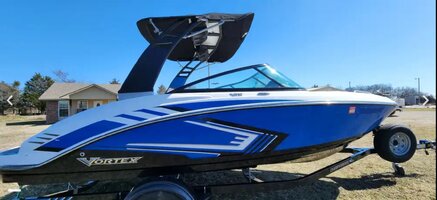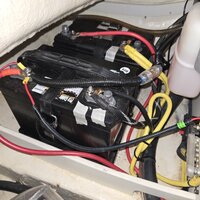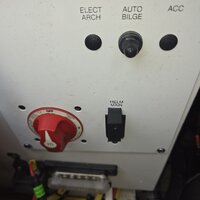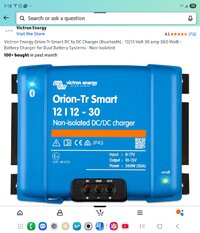-
Welcome to Jetboaters.net!
We are delighted you have found your way to the best Jet Boaters Forum on the internet! Please consider Signing Up so that you can enjoy all the features and offers on the forum. We have members with boats from all the major manufacturers including Yamaha, Seadoo, Scarab and Chaparral. We don't email you SPAM, and the site is totally non-commercial. So what's to lose? IT IS FREE!
Membership allows you to ask questions (no matter how mundane), meet up with other jet boaters, see full images (not just thumbnails), browse the member map and qualifies you for members only discounts offered by vendors who run specials for our members only! (It also gets rid of this banner!)
You are using an out of date browser. It may not display this or other websites correctly.
You should upgrade or use an alternative browser.
You should upgrade or use an alternative browser.
Lipo batteries
- Thread starter outfmny
- Start date
FSH 210 Sport
Jetboaters Fleet Admiral
- Messages
- 8,811
- Reaction score
- 10,869
- Points
- 582
- Location
- Tranquility Base
- Boat Make
- Yamaha
- Year
- 2020
- Boat Model
- FSH Sport
- Boat Length
- 21
Depends on what type of charging system you have. Lots of threads on here about this process. Check my signature for the link to my journey.
outfmny
Member
- Messages
- 27
- Reaction score
- 3
- Points
- 12
- Boat Make
- Chaparral
- Year
- 2019
- Boat Model
- VRX
- Boat Length
- 21
I have a 2019 Chaparral 203 vortex vrx with Rotax 4 tec 1630 ACE engine, I purchased 2 lipo batteries thinking It was as simple as swapping them, but just found out that is not the case and they are not refundable so I own 2 expensive paper weights....what do you recommend me to do?Depends on what type of charging system you have. Lots of threads on here about this process. Check my signature for the link to my journey.
outfmny
Member
- Messages
- 27
- Reaction score
- 3
- Points
- 12
- Boat Make
- Chaparral
- Year
- 2019
- Boat Model
- VRX
- Boat Length
- 21
I have a 2019 Chaparral 203 vortex vrx with Rotax 4 tec 1630 ACE engine, I purchased 2 lipo batteries thinking It was as simple as swapping them, but just found out that is not the case and they are not refundable so I own 2 expensive paper weights....what do you recommend me to do?
Attachments
FSH 210 Sport
Jetboaters Fleet Admiral
- Messages
- 8,811
- Reaction score
- 10,869
- Points
- 582
- Location
- Tranquility Base
- Boat Make
- Yamaha
- Year
- 2020
- Boat Model
- FSH Sport
- Boat Length
- 21
so you say that they are not just drop in batteries why is that?
Do you have a DVSR or automatic charge relay?
Please get us a picture of the voltage regulator rectifier.
Did you read my battery upgrade thread?
Do you have a DVSR or automatic charge relay?
Please get us a picture of the voltage regulator rectifier.
Did you read my battery upgrade thread?
After having my boat for a second and full season, I found that can get about 10 miles out of my trolling motor battery, or about 6 hours of use at 1.8 mph, which is not enough for my average day of fishing which is 10-12 hours. So I was messing around with idea of replacing my trolling motor battery SLA batteries with lithium batteries, and possibly my house battery as well. I haven’t seen a thread detailing the math of LiFePo batteries, only that they are lighter, have more energy than SLA batteries, and most are super happy with them. Hopefully some of you will find the following...
- FSH 210 Sport
- Replies: 128
- Forum: Electronics-Stereo/GPS/Chartplotter/Electrical etc
outfmny
Member
- Messages
- 27
- Reaction score
- 3
- Points
- 12
- Boat Make
- Chaparral
- Year
- 2019
- Boat Model
- VRX
- Boat Length
- 21
I did read the thread, very informative, let me add some picsso you say that they are not just drop in batteries why is that?
Do you have a DVSR or automatic charge relay?
Please get us a picture of the voltage regulator rectifier.
Did you read my battery upgrade thread?
After having my boat for a second and full season, I found that can get about 10 miles out of my trolling motor battery, or about 6 hours of use at 1.8 mph, which is not enough for my average day of fishing which is 10-12 hours. So I was messing around with idea of replacing my trolling motor battery SLA batteries with lithium batteries, and possibly my house battery as well. I haven’t seen a thread detailing the math of LiFePo batteries, only that they are lighter, have more energy than SLA batteries, and most are super happy with them. Hopefully some of you will find the following...
- FSH 210 Sport
- Replies: 128
- Forum: Electronics-Stereo/GPS/Chartplotter/Electrical etc
FSH 210 Sport
Jetboaters Fleet Admiral
- Messages
- 8,811
- Reaction score
- 10,869
- Points
- 582
- Location
- Tranquility Base
- Boat Make
- Yamaha
- Year
- 2020
- Boat Model
- FSH Sport
- Boat Length
- 21
I need to know why you think the LFP batteries are not compatible.
So your battery switch is just a 1, 2, or 1&2??
So your battery switch is just a 1, 2, or 1&2??
outfmny
Member
- Messages
- 27
- Reaction score
- 3
- Points
- 12
- Boat Make
- Chaparral
- Year
- 2019
- Boat Model
- VRX
- Boat Length
- 21
1, 2 and 1 and 2I need to know why you think the LFP batteries are not compatible.
So your battery switch is just a 1, 2, or 1&2??
outfmny
Member
- Messages
- 27
- Reaction score
- 3
- Points
- 12
- Boat Make
- Chaparral
- Year
- 2019
- Boat Model
- VRX
- Boat Length
- 21
I've read that the stator may not charge them or it may overheat?1, 2 and 1 and 2
outfmny
Member
- Messages
- 27
- Reaction score
- 3
- Points
- 12
- Boat Make
- Chaparral
- Year
- 2019
- Boat Model
- VRX
- Boat Length
- 21
Just got to the boat, here are more pics
Attachments
-
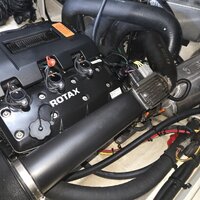 20251003_172221.jpg1.3 MB · Views: 11
20251003_172221.jpg1.3 MB · Views: 11 -
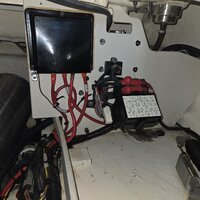 20251003_172208.jpg1.1 MB · Views: 11
20251003_172208.jpg1.1 MB · Views: 11 -
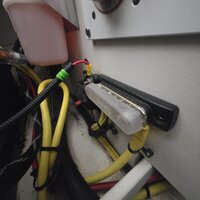 20251003_172111.jpg1.4 MB · Views: 9
20251003_172111.jpg1.4 MB · Views: 9 -
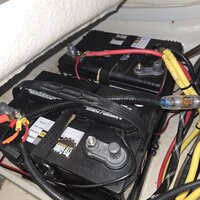 20251003_172037.jpg1.2 MB · Views: 7
20251003_172037.jpg1.2 MB · Views: 7 -
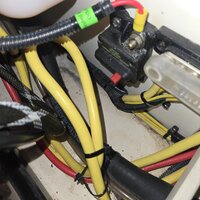 20251003_172010.jpg1 MB · Views: 8
20251003_172010.jpg1 MB · Views: 8 -
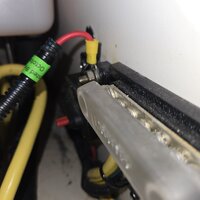 20251003_171957.jpg564.9 KB · Views: 6
20251003_171957.jpg564.9 KB · Views: 6 -
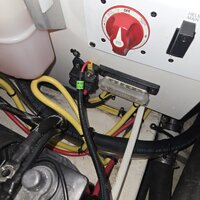 20251003_171942.jpg1 MB · Views: 6
20251003_171942.jpg1 MB · Views: 6 -
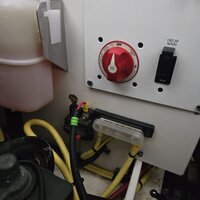 20251003_171932.jpg1 MB · Views: 6
20251003_171932.jpg1 MB · Views: 6 -
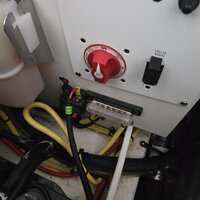 20251003_171917.jpg956.2 KB · Views: 7
20251003_171917.jpg956.2 KB · Views: 7 -
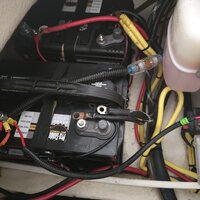 20251003_171921.jpg1 MB · Views: 7
20251003_171921.jpg1 MB · Views: 7
FSH 210 Sport
Jetboaters Fleet Admiral
- Messages
- 8,811
- Reaction score
- 10,869
- Points
- 582
- Location
- Tranquility Base
- Boat Make
- Yamaha
- Year
- 2020
- Boat Model
- FSH Sport
- Boat Length
- 21
If your alternator is a permanent magnet type and it’s like the Yamaha‘s, it’s always at full output. Can you get a picture of the voltage regulator rectifier?I've read that the stator may not charge them or it may overheat?
Even better if you have an electrical diagram of the charging system.
That Victron, DC to DC charger basically hooks to your starter battery and then charges another battery but there’s a lot of losses associated with that and sometimes there’s a minimum amperage requirement from the alternator.
The stater, is just the stationary winding of the alternator. More than likely, your system generates three phase AC voltage and the rectifier converts it to 12 V DC and then the regulator controls how much power flows into the batteries the XS voltage and current is then shunted to ground.
FSH 210 Sport
Jetboaters Fleet Admiral
- Messages
- 8,811
- Reaction score
- 10,869
- Points
- 582
- Location
- Tranquility Base
- Boat Make
- Yamaha
- Year
- 2020
- Boat Model
- FSH Sport
- Boat Length
- 21
It’s picture #1, the thing with the three yellow wires on one plug… .does it have a water cooled plate that it is mounted on?
While I cannot be absolutely certain, I’ pretty sure the charging system in your boat is the same type that is in the Yamaha’s… PMA or permanent magnet alternators. I’ve had no problems with my boat charging the LFP house battery via the dvsr / ACR. I also have a AGM start battery. Having said that, herein lies your problem. IMHO you do not want an LFP start battery, you want a lead acid flooded or agm, then you have a DVSR or ACR that activates once the voltage comes up to 13.4 on the start battery then closes to parallel the start and the house batteries and the charging system will charge the LFP battery as well as the start battery. You do not want to have the lead acid start battery tied to the house LFP battery if the engines are not running as the LFP battery will discharge into the lead acid battery, that is all covered in the thread I did on this. Which means, your DVSR / ACR has to be deactivated when the engines are off, you can either do this with a manual switch or with a run hot. I use a manual switch, other folks use the fuel pump hot wire.
Another thing you want to be careful about is turning your battery switch when the engines are running unless you know for sure that it is make before break type of switch. If you open the circuit to the batteries while the engine is running it could destroy the voltage rectifier / regulator.
This is one reason that you do not want to have a LFP battery for a starter battery, the BMS in some less expensive LFP batteries could turn the battery off when the battery is fully charged, which would open the circuit to the battery so to speak.
In summary, you’d need to add a DVSR / ACR to your battery system, make it so the DVSR / ACR only activate while the engine is running, and change the battery switch set up as well to make those LFP batteries work for you.
While I cannot be absolutely certain, I’ pretty sure the charging system in your boat is the same type that is in the Yamaha’s… PMA or permanent magnet alternators. I’ve had no problems with my boat charging the LFP house battery via the dvsr / ACR. I also have a AGM start battery. Having said that, herein lies your problem. IMHO you do not want an LFP start battery, you want a lead acid flooded or agm, then you have a DVSR or ACR that activates once the voltage comes up to 13.4 on the start battery then closes to parallel the start and the house batteries and the charging system will charge the LFP battery as well as the start battery. You do not want to have the lead acid start battery tied to the house LFP battery if the engines are not running as the LFP battery will discharge into the lead acid battery, that is all covered in the thread I did on this. Which means, your DVSR / ACR has to be deactivated when the engines are off, you can either do this with a manual switch or with a run hot. I use a manual switch, other folks use the fuel pump hot wire.
Another thing you want to be careful about is turning your battery switch when the engines are running unless you know for sure that it is make before break type of switch. If you open the circuit to the batteries while the engine is running it could destroy the voltage rectifier / regulator.
This is one reason that you do not want to have a LFP battery for a starter battery, the BMS in some less expensive LFP batteries could turn the battery off when the battery is fully charged, which would open the circuit to the battery so to speak.
In summary, you’d need to add a DVSR / ACR to your battery system, make it so the DVSR / ACR only activate while the engine is running, and change the battery switch set up as well to make those LFP batteries work for you.
FSH 210 Sport
Jetboaters Fleet Admiral
- Messages
- 8,811
- Reaction score
- 10,869
- Points
- 582
- Location
- Tranquility Base
- Boat Make
- Yamaha
- Year
- 2020
- Boat Model
- FSH Sport
- Boat Length
- 21
It’s really not, a lot of boats are set up with DVSR / ACR systems, the twin engine Yamahas come that way. With the Yamahas, the start battery is dedicated as a start battery and the house feeds the majority of the house loads.Thank you for the explanation, it sounds like a lot...
This is the battery switch, compact with an integrated DVSR, the DVSR is configurable to auto, storage and run hot, and has the emergency paralleling switch to manually tie the start and house batteries together. You could buy one of these switches for $206 off of Amazon and a few bucks in lugs and cables and you’d have a dedicated start battery that charges first when the engines start then automatically begins charging the house battery once the start battery reaches 13.4 volts. The other thing these switches do is to protect your electronics from voltage transients when the engines are started.
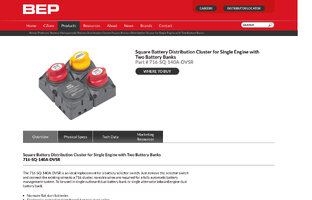
Here’s the single line diagram. What’s not shown is the movable contact within the DVSR that actuates electrically.
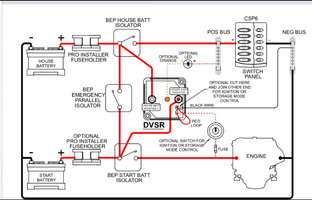
So why was it that you really wanted the LFP batteries?
Weight savings?
Large load like a sound system?
Do you have an onboard battery charger that you plug in while the boat is not in use to keep the batteries charged?
In my battery thread you saw the Victron smart shunt battery monitors, you could put them on each of your batteries so you’d know how much power you have left in your batteries, these shunts are the only way to actually know how much capacity your batteries have, anything else is just a guess.
The only other method to know the SOC / state of charge is to use a hydrometer to check the specific gravity of the electrolyte, and the hydrometer is a crucial tool for charging your flooded lead acid batteries properly to get the most performance and life out of them. Regular equalizing charge is necessary to not only balance the cells but to bring the electrolyte up to the fully charged state.
A lot of people don’t charge properly or monitor their lead acid batteries properly and end up adding larger or more batteries than needed / excessive weight, then still don’t get the storage capacity because they don’t charge their batteries properly. I’d say a lot of people are losing 20-40% of their FLA batteries because the batteries are not charged properly.
Last edited:
outfmny
Member
- Messages
- 27
- Reaction score
- 3
- Points
- 12
- Boat Make
- Chaparral
- Year
- 2019
- Boat Model
- VRX
- Boat Length
- 21
Thank you very much for all this info, unfortunately my Chaparral does not have that set up just the 1, 2 , 1+2 and off but not dvsr that I know unless is hidden lol...the reason is that I want to change just one wet battery to lithium because of the audio system , total 8 speakers, 1 12 inch sub and a 800w amp which 8nwant to change to a jl 1000 amp , all this is controlled from the main screen. I just dont want to fry anything, I bought the lithium batt already 100ah with built in battery monitor and I can't return it, so is just sitting in the box on a battery tender.
Also I do have a noco in the engine bay that charges the batteries when the boat is home since the storage place doesn't have access to electricity.
I wish I could just say yeah....I got this but I'm just hesitant. I'm ok with stereo installs and basic electricity but this just scares me a little.
Also I do have a noco in the engine bay that charges the batteries when the boat is home since the storage place doesn't have access to electricity.
I wish I could just say yeah....I got this but I'm just hesitant. I'm ok with stereo installs and basic electricity but this just scares me a little.
FSH 210 Sport
Jetboaters Fleet Admiral
- Messages
- 8,811
- Reaction score
- 10,869
- Points
- 582
- Location
- Tranquility Base
- Boat Make
- Yamaha
- Year
- 2020
- Boat Model
- FSH Sport
- Boat Length
- 21
I realize you don’t have the battery switch I mentioned, get rid of the battery switch you have and put the BEP in to take its place. Set the dvsr up so that it’s only active when the engines are on and you can use the LFP battery you bought. If you aren’t comfortable with doing that yourself have a competent marine shop do it for you. You’ve already got a decent sound system load and sounds like that is going to increase
What size Noco battery charger do you have? You should have at least 10A per battery. Charging FLA (flooded lead acid) batteries takes a long time to complete, the bulk phase, or full power charging takes the battery to 80%, then the charger goes into the absorption phase which is reduced charging to keep from boiling the electrolyte off and create excessive gassing and can take up to 8 hours to complete, then the float cycle before moving to the storage phase. Depending on the DOD (depth of discharge) the battery size, and the charger size the charge cycle could take up to 24 hours to complete.
Do you run the manual equalizing charges?
Check the gravity?
These are things you need to do with your current set up to get the most out of them, especially since you leave the batteries not on a charger when it’s stored.
You do not need to leave the LFP battery on a tender… their self discharge rate is very low, they can be left for months on end without being on a charger.
What size Noco battery charger do you have? You should have at least 10A per battery. Charging FLA (flooded lead acid) batteries takes a long time to complete, the bulk phase, or full power charging takes the battery to 80%, then the charger goes into the absorption phase which is reduced charging to keep from boiling the electrolyte off and create excessive gassing and can take up to 8 hours to complete, then the float cycle before moving to the storage phase. Depending on the DOD (depth of discharge) the battery size, and the charger size the charge cycle could take up to 24 hours to complete.
Do you run the manual equalizing charges?
Check the gravity?
These are things you need to do with your current set up to get the most out of them, especially since you leave the batteries not on a charger when it’s stored.
You do not need to leave the LFP battery on a tender… their self discharge rate is very low, they can be left for months on end without being on a charger.
outfmny
Member
- Messages
- 27
- Reaction score
- 3
- Points
- 12
- Boat Make
- Chaparral
- Year
- 2019
- Boat Model
- VRX
- Boat Length
- 21
Now i know why it takes forever to charge those wet batteries, one of the things I hate Is the fact that my boat is in storage 40 minutes away and I don't get to do the things I want since is not readily accessible plus the place have no electricity so I have to bring it home and take it back the same day because of the HOA rules.... 
 the best thing for me is to pay a qualified marine tech to do the work but that would be more than a grand, so I wonder if is worth it. You have been very helpful with all those info, yiu need to come down to So. Florida to do my install but I can only pay in food and beer...lol
the best thing for me is to pay a qualified marine tech to do the work but that would be more than a grand, so I wonder if is worth it. You have been very helpful with all those info, yiu need to come down to So. Florida to do my install but I can only pay in food and beer...lol
Similar threads
- Replies
- 24
- Views
- 3K
- Replies
- 3
- Views
- 398
- Replies
- 33
- Views
- 2K
- Replies
- 3
- Views
- 305
- Replies
- 2
- Views
- 527

